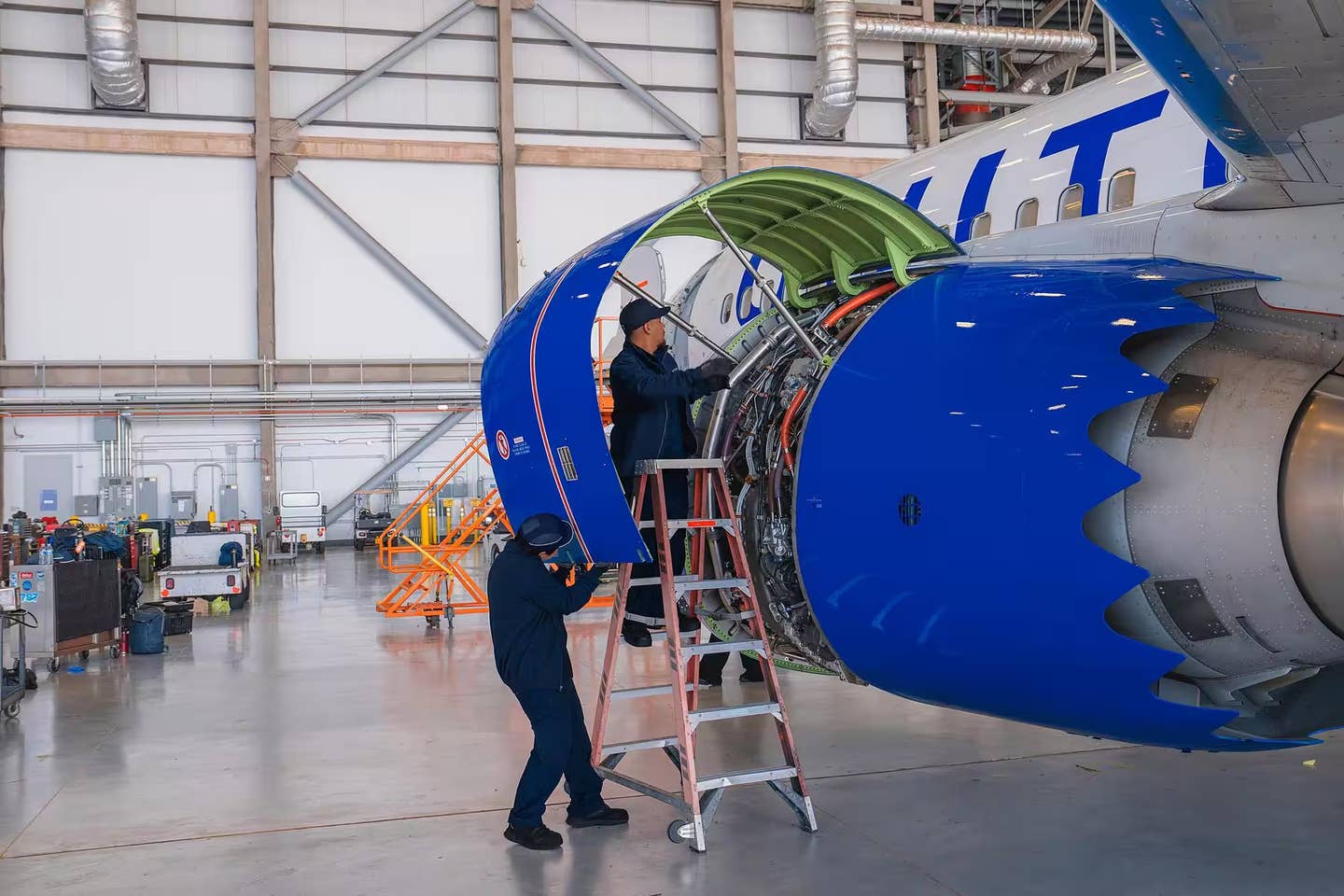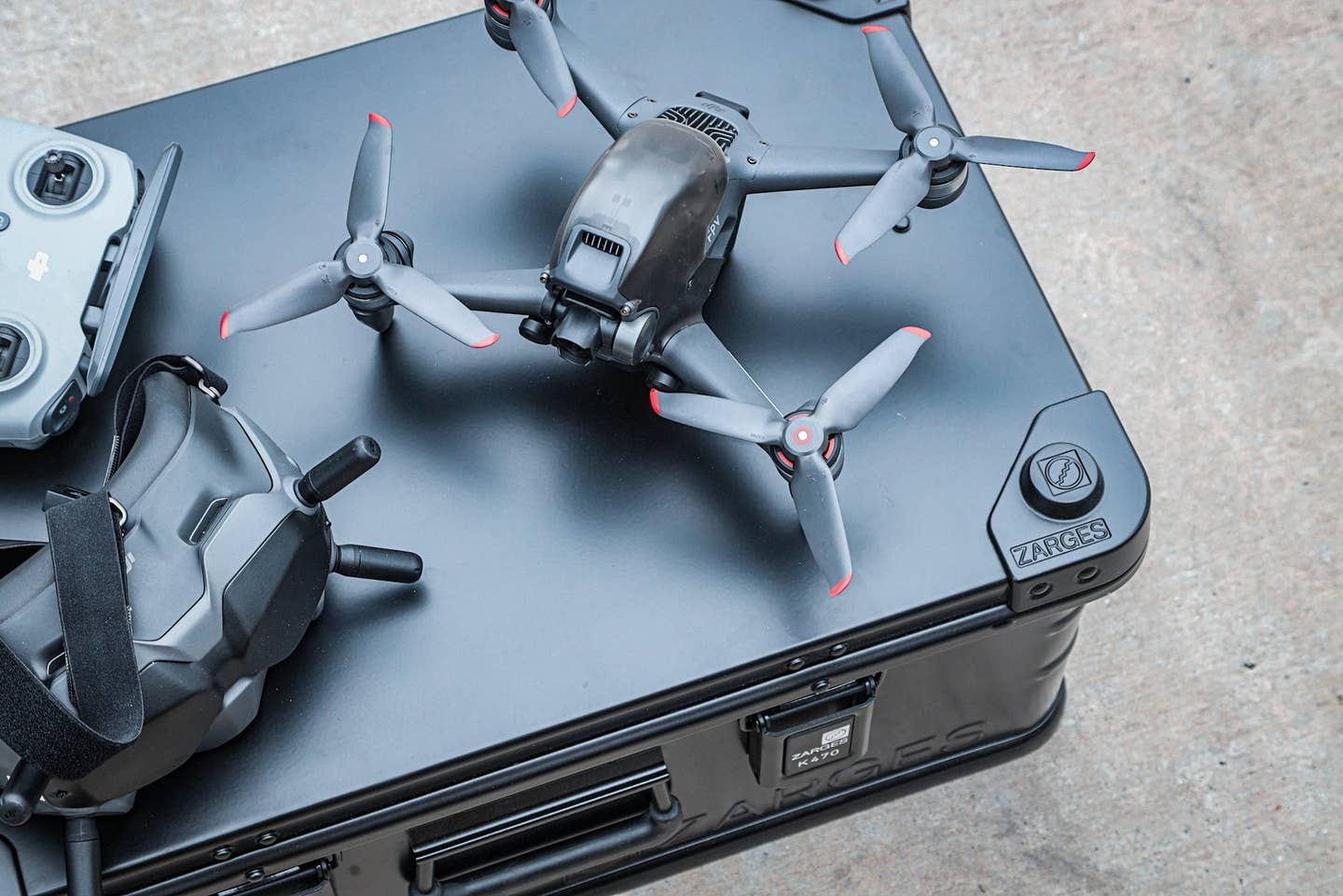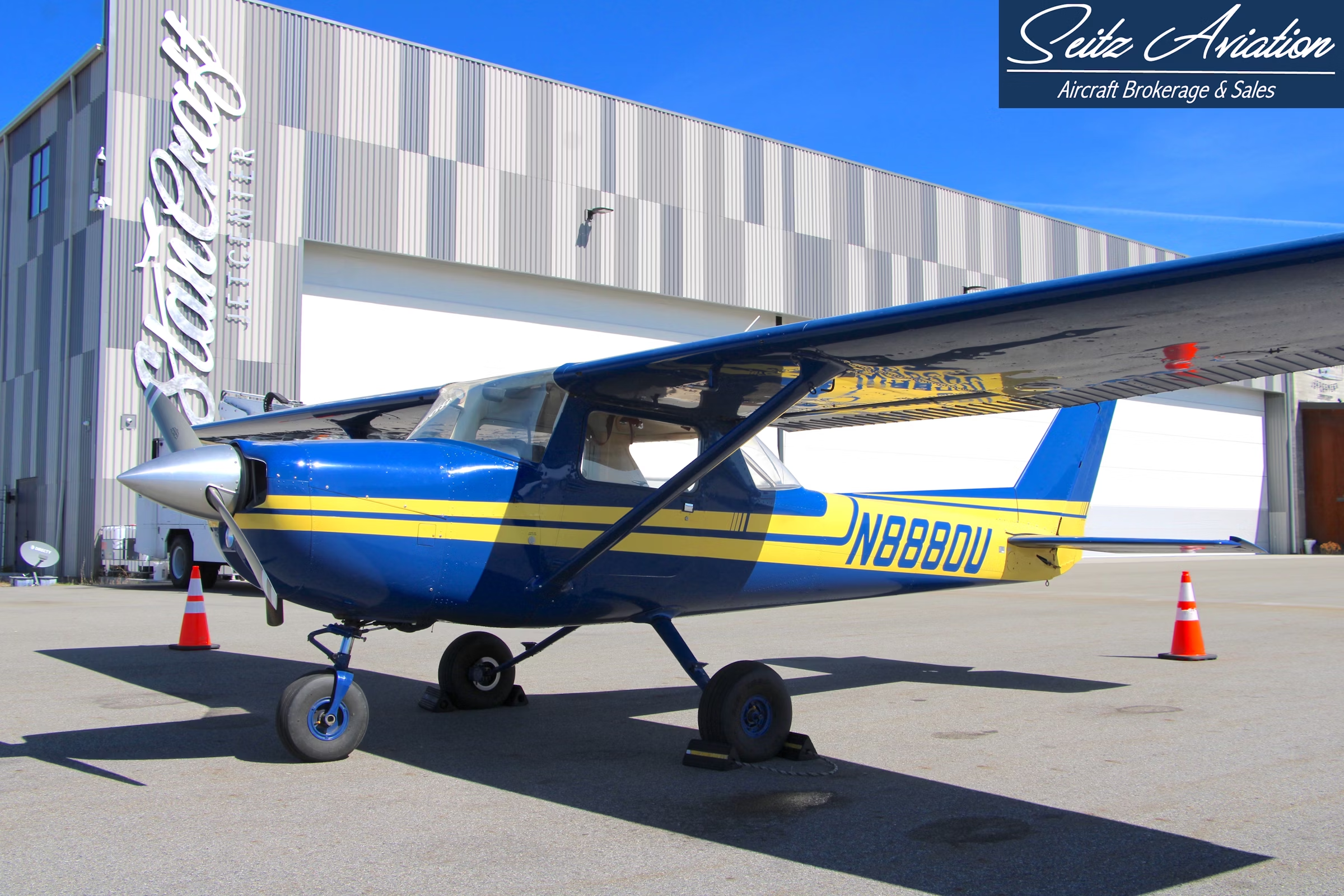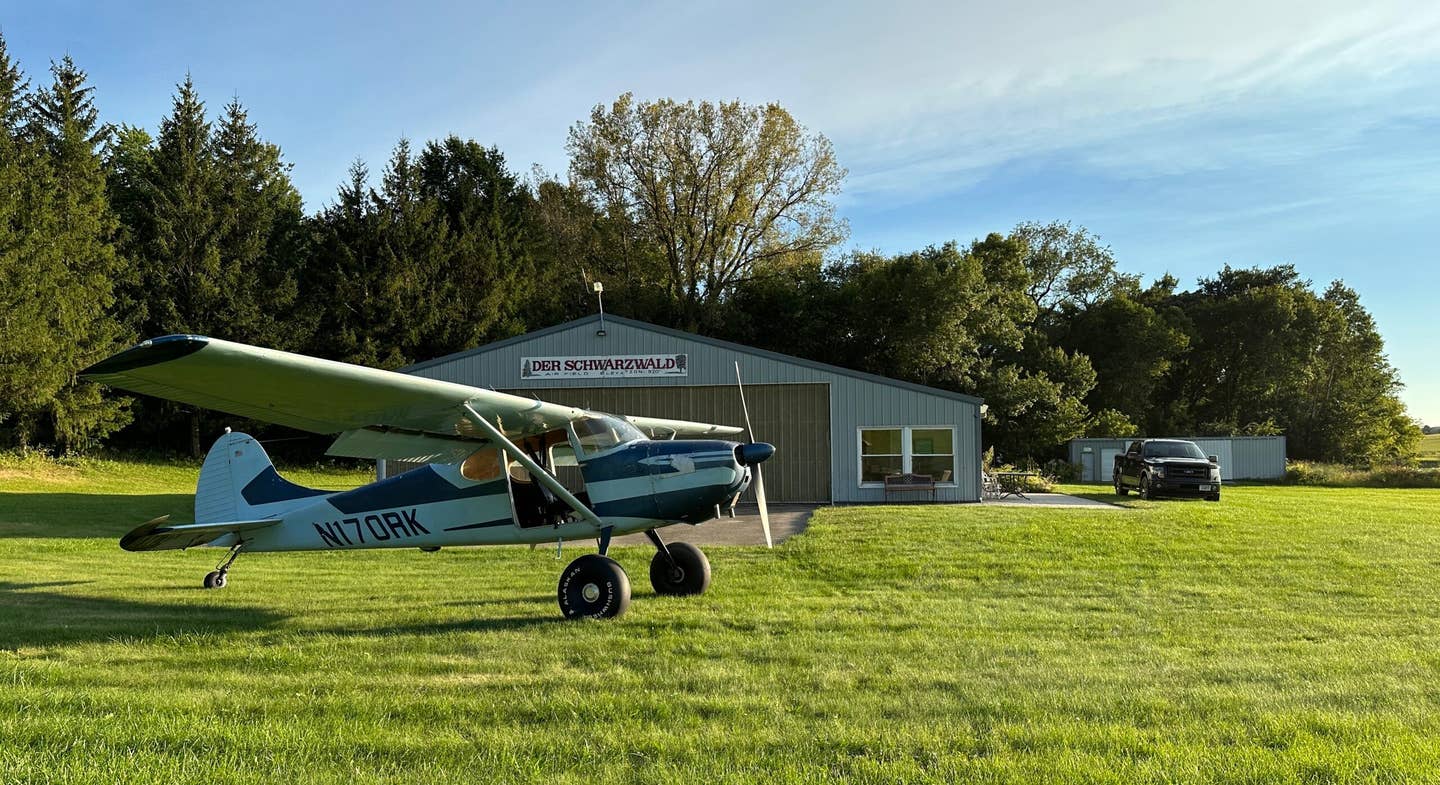Aviation’s Latest Labor Shortage
Aviation Technician Education Council projects a 20 percent shortfall in maintenance techs by 2028—in part caused by an aging workforce nearing retirement.

United maintenance staff [Credit: United Airlines]
The aviation industry is working to address a shortage of aviation maintenance technicians.
A 2024 Pipeline Report by the Aviation Technician Education Council projects a 20 percent shortfall in maintenance techs by 2028—in part caused by an aging workforce nearing retirement.
While there is a strong demand from employers to create more competitive salaries, the career path remains underfilled. That’s why organizations like the Aviation Institute of Maintenance (AIM) are working more closely with airlines to get these much-needed workers trained and hired.
Currently teaching over 7,000 aspiring mechanics, AIM is the largest educational institution for aircraft mechanics in the U.S. AIM operates in 15 locations across the country from San Francisco to New Jersey.
AIM is responsible for recruiting, training, and helping graduates find employment. AIM president Jason Pfaff told AirlineGeeks in a virtual interview that in 2024 the institute graduated over 2,000 of the 7,000 aircraft mechanics entering the industry.
“At any given time, about 25 percent of the nation’s aircraft maintenance technicians have an AIM diploma,” Pfaff said.
Training a new aircraft mechanic at AIM takes around 21 months. Pfaff said that AIM acts as the “tip of the spear” in recruiting and supporting the nation’s next generation of maintenance technicians.
“Learning aviation maintenance is tough,” he said. “The job can be tough. Folks are on a tarmac or in a hangar, and there’s a lot to learn. So we really want to support and surround our students with support while they’re in school with us.”
Then there’s the critical responsibility of getting students who graduate placed in the field. To do this, AIM helps students develop their skills and résumés, and helps open up career opportunities with prospective employers.
“This is where our partnerships with British Airways or United or Piedmont really come into play,” Pfaff said. “Our students don’t exactly come to learn aviation as much as they come for a job—and learning aviation is really part of that journey.”
Who Are Today’s Aircraft Mechanics?
Pfaff said there is “a meaningful percentage” of incoming aircraft maintenance technicians who choose the career due to a familial connection to the industry.
“A brother, an uncle, a father or a mother—they’ve got someone [already] in the industry,” Pfaff said. “What we talk about internally is there’s this ‘miracle of aviation’ that once you’re hooked, you’re captivated. A lot of folks get introduced to that very early in life.”
Whether that be piloting, working on the business side of commercial aviation or working as a mechanical engineer, Pfaff said around a third of the folks he sees entering the industry do it because of that.
“Another one-third is, increasingly we’re seeing students that are more interested in trade-oriented programs,” he said. “[In] this rising generation that’s graduating high school now, there’s a segment that’s like ‘the tool belt generation.’ They’re more interested and more predisposed to these types of mechanical careers than we saw over the last 10 to 15 to 20 years.”
- READ MORE: Top Aircraft Maintenance Jobs
Instead of going to college, Pfaff said this “toolbelt generation” of students is opting for a quicker return on investment with a solid career path.
“As young adults pursue that path, I think aviation speaks to that population very well,” he said.
The last third is made up of workers who may have been working for several years post-high school and are looking for better, more long-term career opportunities.
Tackling the Shortage
A 2023 Oliver Wyman report stated fears of an aircraft maintenance tech shortage started as early as 2017. As the COVID-19 pandemic swept the globe, these fears were put at the backburner of industry conversation.
“But anxiety over a dearth of aircraft maintenance workers was pushed to the forefront again as the pandemic waned and the raft of early retirements during COVID began to put a squeeze on the labor market,” the report stated. “Aviation executives ranked a potential mechanics’ shortage MRO’s No. 1 headache in Oliver Wyman’s annual survey earlier this year [2023].”
As of the report, most aircraft maintenance techs were over 40 years old—with the percentage of ages 18 to 30 in the single digits.
“One key to improving the outlook is engaging with prospective workers, getting them interested in aviation again,” the report said. “But in today’s highly competitive climate, targeting high school and college students is probably too late. That education campaign needs to start early with programs that introduce both children and their parents to what’s possible in aviation.”
Pfaff said that the industry is aware that there is an “accelerating” problem regarding aviation’s shortage of aircraft maintenance techs.
“We’re not to the depths of how challenging it can get, but I think everyone sees that on the horizon,” he said. “The shortfall gap is accelerating annually and that’s starting to compound. So I think we’re in this unique time where folks understand the shortage is real. It’s not going to get better on its own, and we’re going to have to take tactical [and] intelligent steps to solve that problem.”
AIM’s partnerships with employers and carriers increasing wages have been some of the ways the industry has sought to address the shortage.
“If it’s a nine inning game, I’d say we’re probably in the third inning,” Pfaff said. “It will get more challenging. But again, from our perspective, at least from some of the conversations we’re having, this could also be a catalyst for a lot of really exciting change in our industry as well.”
Pfaff said he hopes that catalyst will take the form of more people starting careers in the aviation industry, which could come from growing partnerships between AIM and airlines.
Editor’s Note: This article first appeared on AirlineGeeks.com.

Sign-up for newsletters & special offers!
Get the latest FLYING stories & special offers delivered directly to your inbox






